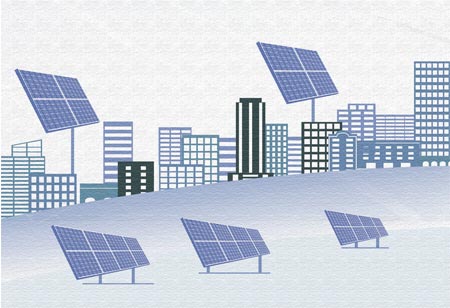The phase shift in the way how the Earth environment is viewed is one of the best example for the saying ‘history repeats’. I do have a vague memory of my boring history classes at school. The Bishnoi and Chipko Movements! Importance given to the environment long ago. Just like me many T would have fell asleep. Swiftly forwarding to a few decades after these historic deeds came up the buzz word industrial revolution, which turned the entire world upside down! Factories were established, businesses evolved, power generation using water was one of the best inventions back then. With all this, population explosion and fast urbanization which is leading to afforestation are creating complex environmental problems. Not something to be proud of! Quoting a recent example, Paris recorded 42.c degree centigrade. Global warming hitting us hard, and suddenly people are turning back to be eco-savvy.
People are constantly making effort to repair the environment and a new era of sustainability is raising touching nook and corner. The world is in the process to rethink and re-engineer techniques and follow eco-friendly practices which is no more a social cause but the need to build a better world. The thought has now declared readiness to accelerate the transition to a low carbon economy, conscious to nature of fossil fuels and its effects on environment as the main cause of global warming.
Researching on the best solution to take a step to save environment harnessing the benefits of solar energy came forth as the best answer. As the conditions for the harnessing solar energy is easier. The Sun bathes the Earth with enough of light and heat to fulfil the energy needs globally. It is the cleanest, most abundant renewable energy source available. The U.S. has some of the world’s richest solar resources. Today’s technology allows us to harness this resource in several ways, giving the public and commercial entities flexible ways to employ both the light and heat of the sun.
As estimated by Renewable Energies Info Publication, The Earth’s surface receives 120,000 Terawatts of solar irradiation, which is claimed to be 20,000 times more than the whole planet
needs. The Union of Concerned Scientist say that 18 days of solar radiation contains as much energy as the world’s coal, oil and natural gas provides when put together.
There are three primary technologies by which solar energy is harnessed: photovoltaics (PV), concentrating solar power (CSP), solar heating and cooling (SHC).
PV is a technique which directly converts light into electricity, whereas CSP uses the thermal energy to drive utility scale, electric turbines. SHC uses the solarenery to provide hot water and air conditioning.
When sunlight strikes the PV module, made of a semiconductor material, electrons are stripped from their atomic bonds. This flow of electrons produces an electric current. PV modules contain no moving parts and generally last thirty years or more with minimal maintenance.
-
People are constantly making effort to repair the environment and a new era of sustainability is raising, touching nook and corner
CSP plants use mirrors to concentrate the sun’s thermal energy to drive a conventional steam turbine to make electricity. The thermal energy concentrated in a CSP plant can be stored and used to produce electricity when it is needed, day or night. Today, over 1,400 MW of CSP plants operate in the U.S., and another 340 MW of CSP projects will be placed in service within the next year.
Facts about solar energy
It's Renewable
Solar panels produce electricity by transforming the continuous flow of energy from the sun to electricity. As we know, sun is never-ending source of energy.
It's CO2 –free
No harmful emissions are released into the air when electricity is produced by solar panels.
Costs much lesser than other modes
The photovoltaic process that transforms sunlight into electricity doesn’t require any fuel and has no variable costs.
No fuel to burn
After solar panels have been installed, operational costs are quite low compared to other forms of power generation. Fuel isn’t required, and this means that solar power can create large amounts of electricity without the uncertainty and expense of securing a fuel supply.
As a renewable source, the environmental impact created by this is significantly smaller than other power generation methods. Everything is associated with its own pros and cons. Here, the problem mainly comes with production and supply of the special materials and metals that are required to produce solar panels. The cleaning process is tedious and this is something negatively impacts nature by consuming water. The companies and govt is trying to find alternate ways to overcome this problem.
 Magazine
Magazine
